Tips For Growing The Best Tasting Strawberries
Want juicy, flavor-packed organic strawberries straight from your garden? We have the best tips for growing plump and delicious garden strawberries. Find out our favorite variety that’s exceptionally flavorful, is large in size and produces a big yield.
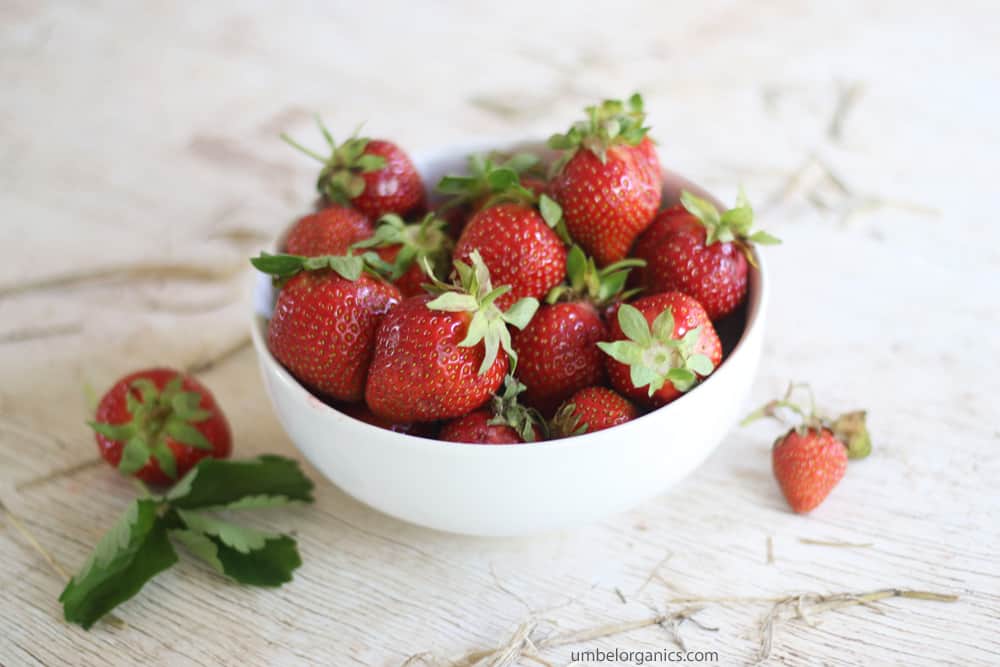
Disclosure: This post contains affiliate links, which means if you make a purchase through these links, we may receive a small commission at no extra cost to you.
There’s nothing like biting into a juicy, ripe, sweet strawberry picked straight from the garden. We have a 4’x12′ raised garden bed dedicated to strawberry plants and this year they’re better than ever.
We’ve planted strawberry varieties in the past that were big on flavor but the berries were small and the yield started to decrease every year. Last year we dug up the bed and re-planted with a new strawberry variety that has high yield, big berries and exceptional flavor.
This year we hit the strawberry jackpot! Read on to discover our favorite new variety and learn some tips for planting and growing delicious organic strawberries.
Did you know that conventionally grown strawberries are ranked #1 on the Environmental Working Group’s Dirty Dozen most contaminated produce list? It’s time to grow your own delicious organic strawberries. Strawberries are not hard to grow in the garden or in outdoor containers.
Strawberry plants are hardy perennials that multiply every year. The number of plants you buy the first year will be doubled, tripled or more the next year simply by propagating runners. If you start running out of garden space, the strawberry runners can be potted up in containers.
Three Types Of Strawberries
- June-bearing– These plants produce one big crop over a few weeks and spread prolifically through the production of runners. Of the three types of strawberries, June-bearing produce the largest fruit and have the largest yield. The first year of planting, pinch off all the flowers to allow the plants to focus energy on developing a strong root system and produce runners to fill out your strawberry bed.
- Everbearing– These plants produce an early harvest, a late crop with a smaller harvest, and a few berries in between. The fruit and crop size is smaller than June-bearing. The first year, pinch off the flowers from the FIRST crop. You’ll still get a second harvest in the fall. Everbearing varieties do not produce as many runners as June-bearing varieties.
- Day-neutral– These plants produce fruit over the entire growing season but the yield at any given time is relatively small. The fruit is smaller than June-bearing and they do not produce many runners.
Varieties
There are a lot of strawberry varieties to choose from. Our strawberries are a JUNE-BEARING variety, which is the most commonly grown strawberry type.
We like the idea of having a lot of strawberries at once instead of a trickle of fruit spread throughout the season. Plus, June-bearers are usually larger and tastier than everbearing or day neutral varieties.
If you have the space, consider growing more than one variety of June-bearing strawberry. Some varieties ripen early in the season, and other varieties ripen later. You can enjoy an earlier June-bearing harvest followed by a later harvest from a late-season June-bearing variety. We hope to create space for another bed to take advantage of this strawberry season extending concept.
WHAT WE ORDER
Dormant BARE ROOT plants. It’s best to get them in the ground in early spring. Be aware that bare root plants arrive in a dormant state. Even though they may look like they are in poor condition, when you put them in the ground they will perk up when the time is right. DO check to make sure they are not rotten or covered in mold or mildew as such plants are unlikely to thrive.
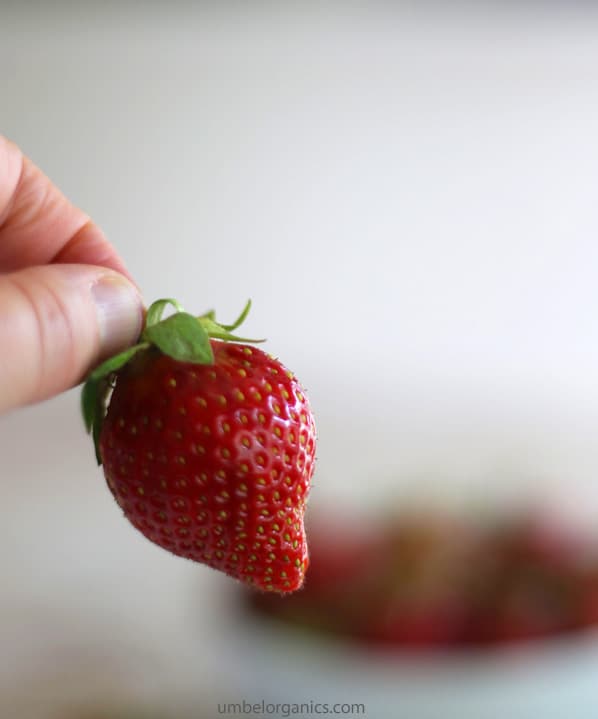
After extensive research, we’ve found a winner…
The ARCHER STRAWBERRY. Here’s what Krohne Plant Farms has to say about the archer strawberry:
“We are very excited to offer this new variety developed at Cornell University by Courtney Weber. A perfect choice for markets or fruit stands: beautiful, flavorful, aromatic strawberries that hold their size for the 2-3 week season of production. The fruit also holds over well and the hardy plants show resistance to many of the problems common to strawberries. Early season, very large to huge fruit size, excellent flavor, firm.”
We love the Archer Strawberry! The strawberries are on the big size for garden strawberries, and we get exceptional flavor along with substance in each bite. Plump, big, red strawberries that have an amazingly sweet strawberry flavor—what more could you want?
This variety also has a big yield, so you can share the harvest with your whole family!
Tips For Planting Strawberries
- For Spring Planting– strawberry plants should go in the ground in March or April depending on where you live. Since bareroot plants are dormant, they easily tolerate frost and cold temperatures. They won’t leaf out until the appropriate time. Before planting, a soil test can help you determine what you need to add to your soil. In general, strawberries like slightly acidic soil, between 5.7-6.5 pH, but they will tolerate soil with a pH range between 5.0 and 7.0.
- Amend the soil with an organic fertilizer before planting. During the first year, strawberry plants thrive in soil with high nitrogen levels, so blood meal or other organic high nitrogen amendments are ideal. Mix in some organic compost to improve the health of the soil.
- Before Planting– make sure the soil is fairly loose down to eight inches to allow roots to establish. For each strawberry plant, dig a hole deep and wide enough to fit the roots. Planting depth is very important when planting strawberries. You want the crown of the plant to be sitting just on top of the soil. If you cover the crown, you are likely to get crown rot, and if you plant too high the roots will not take hold.
- For June-bearing strawberries– use a matted Row System for plant spacing. The idea is that your plants will produce runners to fill in the empty spaces between your original plantings. The bareroot plants should be spaced 18-24” apart.
- For everbearing and day-neutral varieties– use the hill system or hedgerow system.
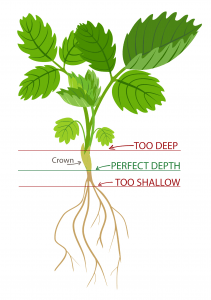
Tips For Growing Strawberries
- Sun– Strawberry plants love FULL SUN.
- Soil– Strawberries need well-drained soil. They prefer soil that’s high in organic matter, so add compost before planting. As mentioned above, strawberries prefer acidic soil, and a soil test can tell you if you need to add lime or manure prior to planting.
- Mulch– We use straw at the base of every strawberry plant to cut down on evaporation, to keep the soil from getting too hot, to control weeds, and to keep the strawberries off the dirt. If you want runners to spread, you can remove some of the mulch until runners have successfully rooted.
- Encourage Fruit Production– For June-bearers, remove all the flower buds in YEAR ONE. This allows the plant to concentrate energy on the root system. You’ll get bigger berries and a larger crop size in year two. As runners start to form, position them where you want the plants to fill in and gently press the end of the runner into the soil. The daughter plant will root in this spot. Strawberry plants do best with a density of no more than 5 plants per square foot. If the plants multiply too much, simply cut them off with pruning shears and replant in a pot or another garden bed.
For everbearer and day-neutral varieties, pinch off all flowers that form until July 1st during the first year. This encourages both plant hardiness and production of runners to fill in the bed. - Water– Water regularly. The soil should be consistently moist, but not soggy. Strawberry plants like about 1 inch of water per week. Continue to water plants after harvesting to help reduce stress and encourage fruit bud formation the next year.
- Fertilize– Before initial planting, add an organic fertilizer that is high in nitrogen to the garden bed (e.g. blood meal) along with some compost. Four to six weeks AFTER planting, you can fertilize again with an organic fertilizer. Once plants are up and growing we typically use liquid fertilizers such as fish emulsion, but you can also side-dress with granular fertilizer instead. Depending on plant growth and the quality of your soil, another round of fertilizer can be applied in August. In subsequent years, apply an organic fertilizer in the spring and again after fruiting.
Day-neutral and everbearing strawberries can be fertilized in the spring and again in midsummer and late summer. - Weed– Weed your strawberry bed frequently so the plants don’t have to compete with weeds for resources.
- Pollination– Strawberries require insect pollinators. Once flowering, do not cover the plants with row covers.
- Protect– Strawberries are tempting to a number of different animals and pests. When the flowers start to develop into fruit, we attach bird netting to PVC hoops with garden clamps to keep both birds and squirrels out of our raised garden bed. Slugs can also destroy developing strawberries, so we scatter Sluggo in the bed to repel slugs. Sluggo is considered safe for use in organic gardens.
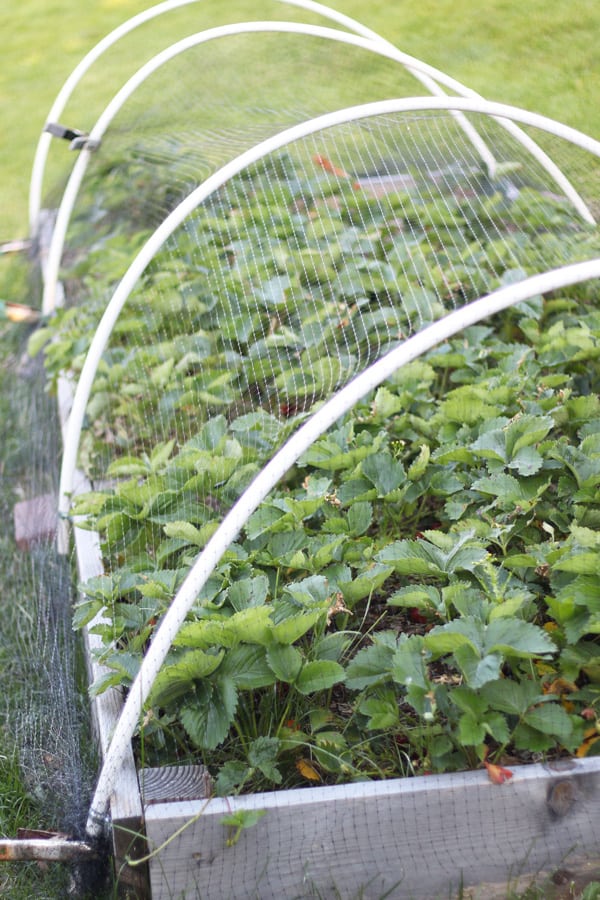
After Harvest
- After harvest, June-bearing strawberry plants will send off numerous runners. Runners will spread along the top of the soil and produce new daughter plants that take root when they come into contact with the soil.
- The parent plant will nourish the daughter plants until they develop an independent root system, at which time the runner will dry up and eventually detach. A single parent plant can produce many runners, and each runner can produce multiple daughter plants.
- Propagation of runners is a great way to fill in your strawberry bed. OR they can be moved to new beds or pots to establish new plantings. As we are filling out our strawberry bed, we direct the runners to where we want them and press them lightly into the soil to encourage rooting. You want your strawberry plants to be spaced 4-6” apart, so you should remove extra runners to prevent overcrowding.
- To move the runners to a new location (or give them to a friend), dig them up after they have rooted. OR place them in small pots or cups full of soil while they are still attached to the mother plant. Once they have rooted they can be transplanted to a new location.
- DON’T detach runners from the mother plant before they root or they will not survive. Once your bed is filled out, it is still recommended to let some runners take root each year. Strawberry yields start to decline after about three years, so this ensures you have a constant supply of younger plants. To prevent overcrowding, remove older plants as you let new plants take root.
- If you find that your yields start to decline significantly, it’s time to start a new strawberry bed.
- Some gardeners recommend trimming strawberry plant leaves in the late summer using a lawn mower or hedge clippers. If using a lawn mower, set it high enough so the leaves are clipped but the crowns are untouched. If you damage the crown, the plant will not survive. We usually skip this step, and find that our plants are still healthy and productive. We DO trim off diseased leaves and remove overcrowded or diseased plants during this time.
- Add mulch to your strawberry beds in the late fall. Pile mulch (we use straw as mulch) over strawberry plants to protect the plant’s root and crown from the cold.
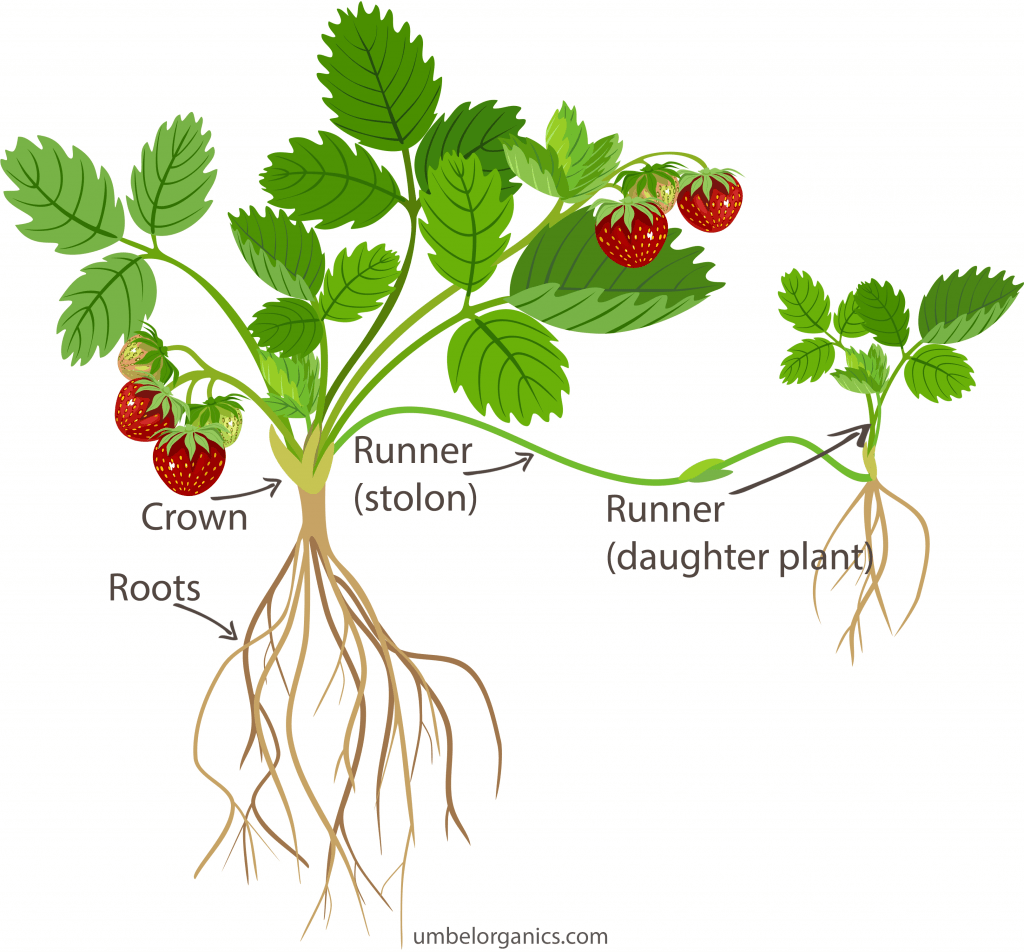
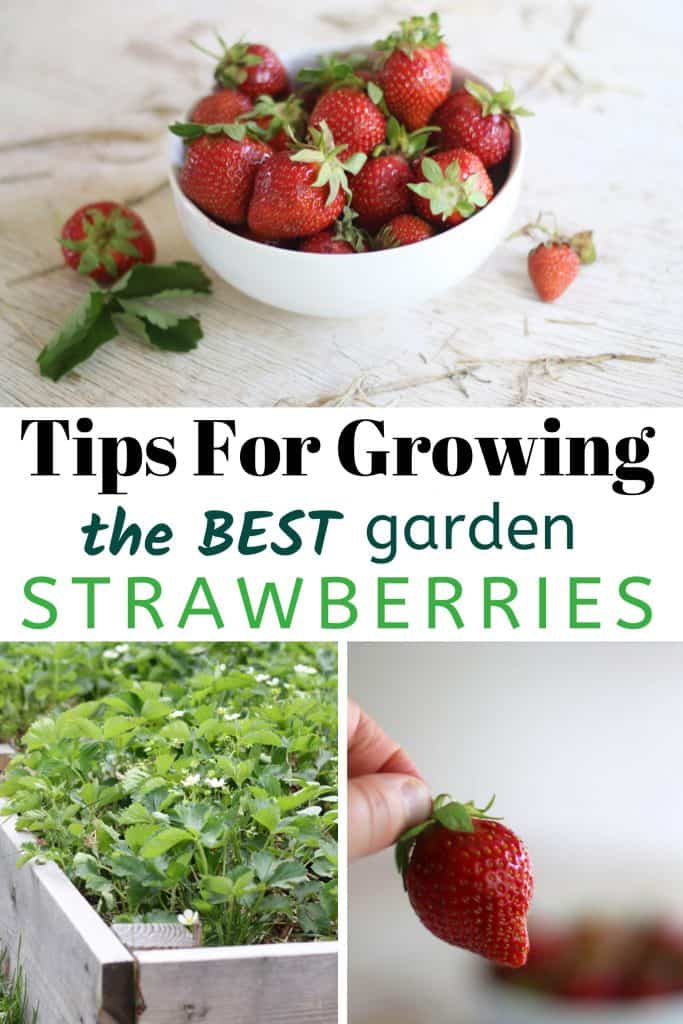
More Gardening Inspiration
images for diagrams via depositphotos

